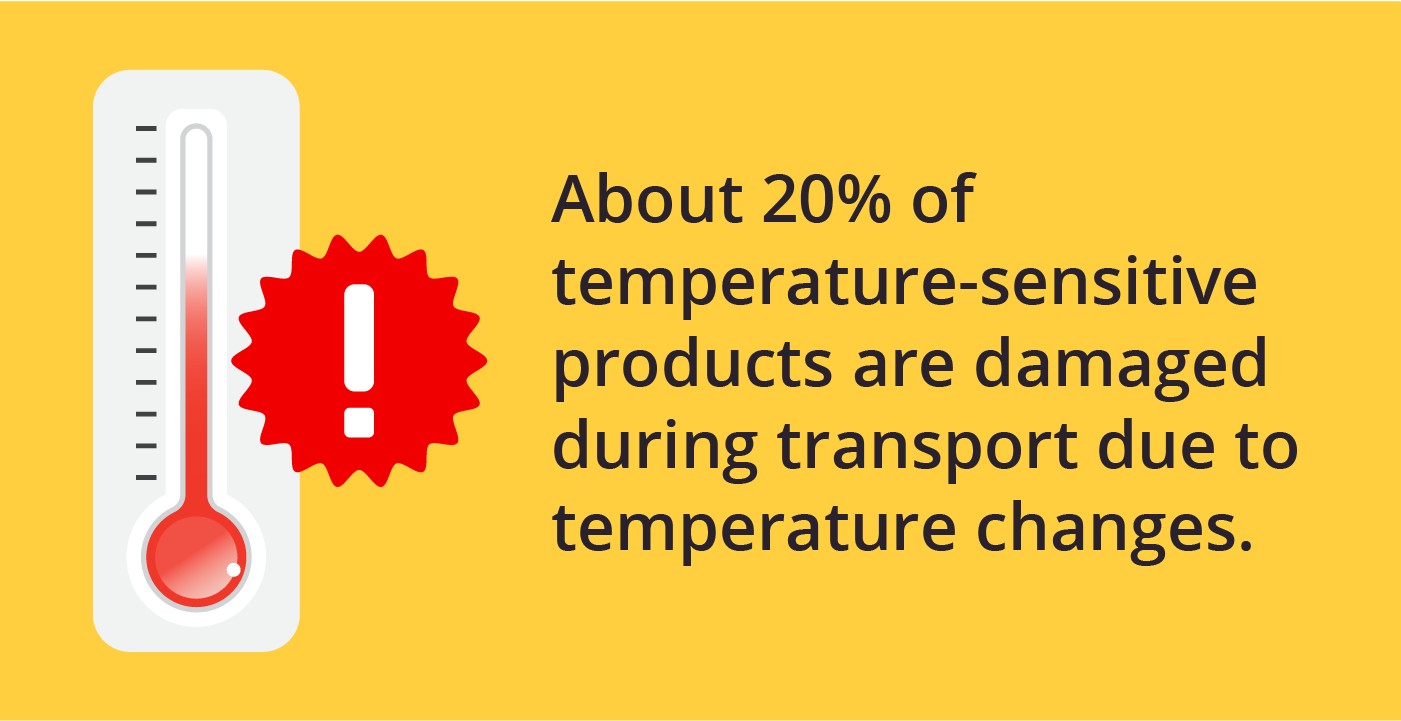One of the first questions your patients may have is: can prescription drugs be delivered? The answer is yes, prescription delivery directly to the patient is allowed, though each jurisdiction or pharmacy may use different methods of delivery and transport. The Government of Canada recommends contacting your local pharmacy for detailed information.
Prescription deliveries must adhere to a lot of regulations from the CDSA [Controlled Drugs and Substances Act]. These regulations outline the rules about how they’re packaged, sold and handled. Patients rely on these medications to maintain their wellbeing. An incident during its transport can damage package integrity, or cause late/missed deliveries, resulting in missed doses. Prescriptions can be more susceptible to risks than general shipments:
- Medication can lose its effect or even become dangerous if impacted by external conditions (e.g. light/temperature change, movement).
- Prescriptions in transit are susceptible to theft due to their high resale value on the black market.
Who can deliver prescriptions? Delivery providers of all sizes can deliver prescription medication in Canada, as long as they’re compliant. It’s important to choose a provider that has the experience and services to safely deliver your prescriptions.
Learn how you can provide a safe and reliable medicine delivery service with the right shipping provider – from the right packaging, to reliable transport and a safe delivery.
How to provide a safe prescription delivery in 8 steps:
1. Ensure you have the right support for compliant prescription delivery.
There are many regulations that must be met for prescription deliveries and some vary province-by-province. To help navigate the regulations, work with a reputable shipping provider that’s experienced in shipping prescriptions. Here are a few examples that are applicable in Ontario:
- Delivery must be tracked, confirming when it’s in transit and delivered to the patient.
- A waiver can’t be signed in advance to be delivered to a mailbox or locker. It must be signed for in-person.
More details about packaging and transit compliance can be found on the government of Canada website.
2. Work with a delivery partner that has a vast and speedy network across Canada.
An increasing number of patients prefer to receive medication directly to their home address within a few days, rather than going to the pharmacy. This trend is in part due to the rise in telemedicine (virtual health care appointments which can write prescriptions) and also the COVID-19 restrictions that kept people at home. Due to their convenience, home prescription deliveries won’t be going anywhere – but for businesses, it means a lot more drop-offs than when delivering to hospitals and pharmacies. To provide a convenient service for patients, work with a delivery provider that has a large network to ensure the best coverage and speed for last-mile deliveries.
3. Use a delivery partner that has experience handling temperature-sensitive shipments.
Not all medications need temperature control, but when they do, it’s essential they remain within their required temperature range to protect their effectiveness and safety. This is known as a cold-chain shipment. For example, the COVID-19 Pfizer vaccine needs to be stored at -70°C and then must be kept between 2-8°C for up to five days before use. Temperature-sensitive insulin also needs to be stored between 2-8°C and can be ineffective or even toxic outside of these temperatures.
Temperature regulation is commonly handled in one of two ways – either by managing an active environment — for example, a refrigerated truck to keep all items at a specific temperature — or through a passive environment, such as an insulated container that maintains a consistent environment for individual packages. To ensure your prescriptions are delivered correctly, use a delivery provider with experience handling cold-chain packaging. This will ensure that your shipments are kept at the right temperature and handled with care.
Moreover, work with a delivery partner with a vast network. This means they can deliver packages directly to patient’s homes quickly, ensuring that temperature-sensitive packages are not in transit longer than they need to be.
4. Ensure your prescription packaging meets the required standards.
Prescription packaging is highly regulated to maintain the safety of the medication and anyone handling it. To ensure the contents are understood, the packaging requires specific information on labels and inserts. For example, warnings such as “time and temperature-sensitive” or “do not freeze” should be visible so that the recipient understands the fragility of the contents. For the safety of the patient (and of anyone else that could come into contact), packaging also must be tamper-evident with the option of blister packs, arthritic caps or child-resistant lids.
5. Use nondescript outer packing to deter theft.
Some medicines can be susceptible to theft due to their lucrative street value, lack of easy accessibility and addictive ingredients. To deter theft, prescription packaging should be plain and non-branded so there are no telling signs of its contents. Consider all five senses when protecting medications. For example, use bubble wrap or other “sound-proofing” protection for medications that rattle and use smell-proof bags if the product has a distinguishable smell.
Save 50% on Business Shipping for 12 months.
6. Don’t allow external conditions to affect a medicine delivery.
Both the inner and outer prescription packaging should protect against physical damage during transit. This includes external movements such as shock, vibrations and wear and tear. Packaging should also shield contents from factors such as temperature changes, humidity and light – particularly for medications that require certain conditions. Using materials that are opaque, insulating and water-resistant can help to keep the internal environment stable.
7. Provide convenient last-mile solutions with full-tracking and the option to virtually sign for a package.
Missing a delivery is inconvenient for most, but for prescriptions, it can be a serious situation. End-to-end tracking is legally required for prescription medications in Canada to ensure the patient and sender know when the medication should be delivered. As mentioned earlier, tracking should include when the medication is in transit, and when it is delivered. While prescription drugs must be signed for in person for legal reasons, businesses can also provide customers with the option to virtually sign for a package that isn’t a prescription, so it can be left at its destination without needing a signature. Please note, rules differ from province to province.
8. Provide a variety of medicine delivery services that are right for your recipient.
To truly provide a convenient prescription delivery service, offer a variety of delivery options that can cater to all situations. For example, depending on the delivery, your recipient may need it urgently, or at a specific time for their convenience.
Here are some of the solutions to look for when choosing the right delivery provider for your prescription deliveries:
- End-to-end tracking visibility for patient and pharmacy
- Special handling for temperature-sensitive capabilities
- Variety of pick-up options and drop-off locations, including home addresses and pharmacies
- Safe returns management services for prescriptions
- Urgent shipments and other time-sensitive options for total convenience
- Adult signature required for the safety of minors
Shipping pharmaceuticals requires following a lot of rules due to their fragility and effectiveness. Plus, your patients are relying on their safe and timely arrival. By following these tips, and by using the right delivery provider, you’ll be able to provide a reliable delivery with your patient’s needs in mind.



